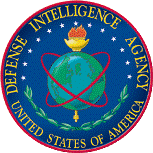United States Department of Defense
Date of this Version
6-1954
Document Type
Article
Abstract
This is a textbook used at the Army Transportation School. In the 1950s, military schools related to one of the Army Technical Services were run by that service. Since the format and content of Army field manuals were often very similar to those of special texts, the same staffs often prepared both. At the time this special text was written no field manual on transportation intelligence has been issued.
The modern US Army vision of the technical intelligence developed during World War II. Shortly before World War II, Army Technical Services had been instructed to set up intelligence sections in the offices of their chiefs. The technical services were bureaus which supplied weapons, equipment, and services to the Army, managed the careers of officers in a particular branch, trained specialists, and organized and trained special purpose military units. There were a number of technical services including the Chemical Warfare Service, the Medical Department, the Ordnance Department, the Quartermaster Corps, the Transportation Corps, etc. The Transportation Corps provided non-combat vehicles, operated Army port and depot facilities, and operated Army transportation systems. It managed the careers of officers commissioned in the Transportation Corps branch. The head of the Transportation Corps was a general with the title of the Chief of Transportation. The Office of the Chief of Transportation was the headquarters of the Transportation Corps in Washington, DC.
During World War II, the importance of studying foreign military equipment had become apparent and procedures for collecting and evaluating of equipment had been developed. Technical intelligence organizations in the Technical Services grew and operating procedures were developed and refined. Technical intelligence came to be defined as production and dissemination of intelligence about foreign weapons and equipment and production and dissemination of intelligence about foreign capabilities analogous to those of the technical services in the US Army. For example, during the 1950s, the Transportation Corps was responsible for intelligence concerning the transportation systems of the Warsaw Pact armed forces. Since there was no national intelligence agency with expertise in transportation systems existed, the Transportation Corps was made responsible for intelligence about ports and about waterways, railway, and road systems of foreign nations.
This textbook describes the organization of transportation intelligence in the Office of the Chief of Transportation and in units in the field, and describes operations with an emphasis on operations in the field. It describes the creation, dissemination, and use of transportation intelligence.
Appendices described transportation intelligence requirement for railways, highways, ports, inland waterways, and equipment and facilities.
Included in
Defense and Security Studies Commons, Military and Veterans Studies Commons, Other Engineering Commons, Peace and Conflict Studies Commons, Soviet and Post-Soviet Studies Commons



Comments
(1) This is a digital copy of a copy of a document borrowed from the US Army Military History Institute in 2005. A note written on the title page says that some illustrations were not copied.
(2) In the Army Publications System, textbooks for use at service schools were called a “Special Text.”
(3) Since the Army reuses manual numbers and name, the date of the manual must be noted to unambiguously cite a manual. The minimal citation for this text would be, “ST 55-06-1, 54.”